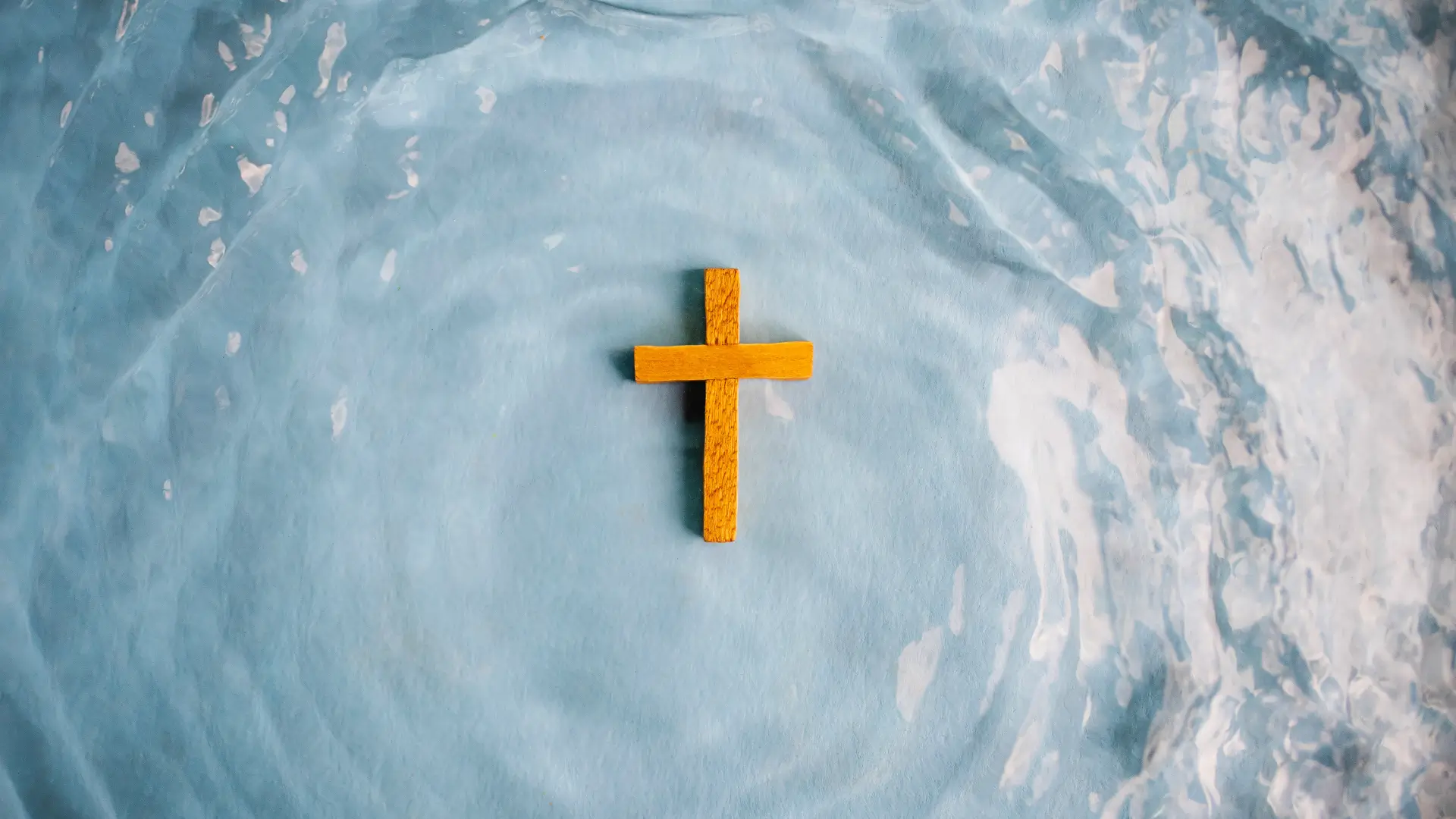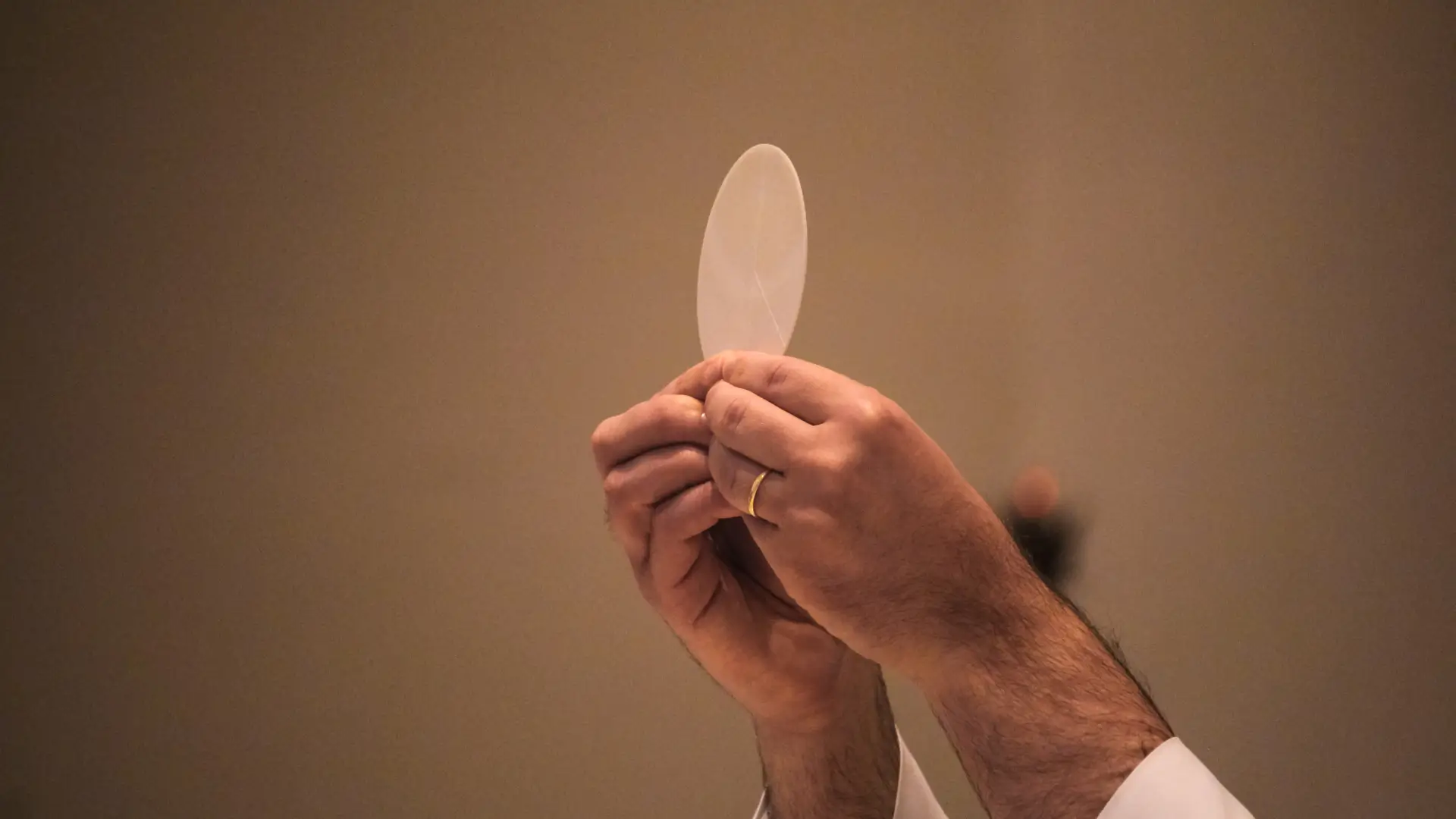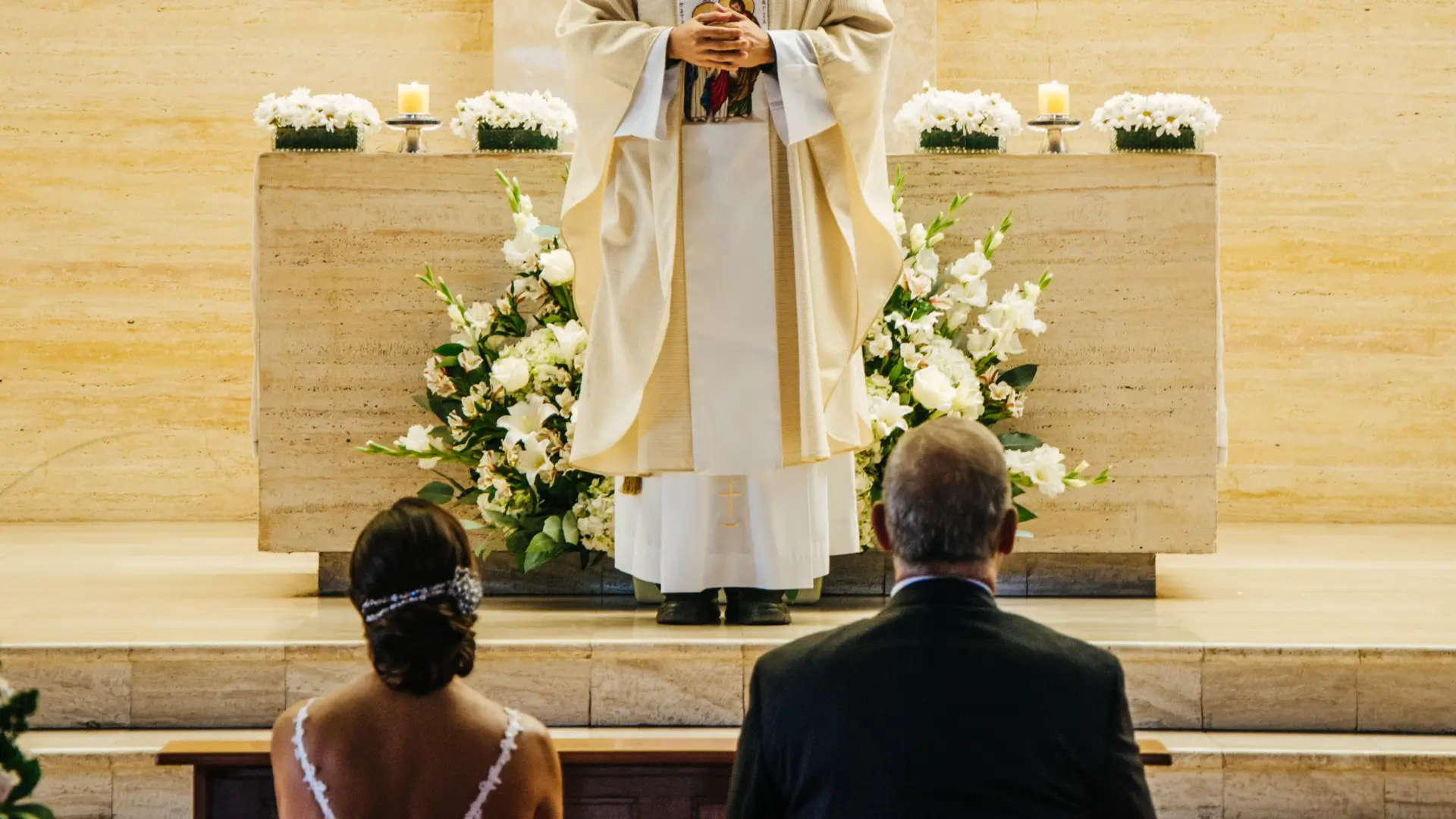Baptism is a fundamental sacrament in Christianity, symbolizing purification, rebirth, and admission into the faith community. It represents a believer’s identification with the death, burial, and resurrection of Jesus Christ. This article explores the significance of baptism, addresses common questions, and provides guidance on traditions and etiquette.
What Is Baptism According to the Bible?
According to the Bible, baptism is an outward expression of an inward faith. It signifies the washing away of sins and a new birth in the Holy Spirit. Scriptures like Matthew 28:19 command believers to make disciples and baptize them “in the name of the Father, and of the Son, and of the Holy Spirit.” Baptism is seen as an act of obedience and a public declaration of faith.
Is Baptism Necessary for Salvation?
The Catholic Church holds that baptism is essential for salvation. According to the Catechism of the Catholic Church (CCC 1257), baptism is the first sacrament of initiation, cleansing a person from original sin and any personal sins, and incorporating them into the Body of Christ. This belief is rooted in Jesus’ command in Mark 16:16: “Whoever believes and is baptized will be saved.” The Church teaches that through baptism, individuals receive the grace necessary for salvation and are united with Christ and the Church community.
However, the Catholic Church also acknowledges the concept of “baptism of desire” and “baptism of blood,” recognizing that those who, through no fault of their own, do not receive the sacrament of baptism can still achieve salvation by their sincere pursuit of God and adherence to their conscience. Despite these exceptions, the ordinary means of attaining salvation, as understood by the Church, remains through the sacrament of baptism. This perspective emphasizes both the necessity of baptism and the boundless mercy of God, allowing for salvation beyond the visible boundaries of the sacrament.
The Baptism of the Holy Spirit
What Is the Baptism of the Holy Spirit?
The baptism of the Holy Spirit refers to the spiritual immersion into God’s presence, empowering believers with gifts and abilities for service. It’s distinct from water baptism and is mentioned in Acts 1:5. This experience can occur before or after water baptism and is often associated with receiving spiritual gifts.
How Can I Receive the Baptism of the Holy Spirit?
Receiving the baptism of the Holy Spirit involves seeking God through prayer and being open to His work in your life. Luke 11:13 encourages believers to ask God for the Holy Spirit. It’s a personal experience that strengthens one’s faith and commitment to God’s will.
Infant Baptism vs. Believer’s Baptism
Why Is Infant Baptism Practiced?
Infant baptism is a fundamental practice in the Catholic Church, rooted in the belief that baptism removes original sin and bestows God’s grace from the very beginning of life. Catholic theology teaches that all humans inherit original sin, and baptism is essential for cleansing this sin and initiating the individual into the Christian community. By baptizing infants, the Church ensures that every child starts their spiritual journey free from sin and connected to the Body of Christ. This sacrament is seen as a continuation of the Old Testament practice of including children in the covenant community, paralleling the role of circumcision in the Old Covenant.
Additionally, infant baptism emphasizes the communal and familial responsibilities in nurturing a child’s faith. Parents and godparents make a public commitment to raise the child in the Catholic faith, providing spiritual guidance and support as the child grows. This practice highlights the Church’s role in fostering a lifelong relationship with God, supported by the entire faith community. Historically, the tradition of baptizing infants dates back to the early centuries of Christianity, underscoring its enduring significance. By embracing infant baptism, the Catholic Church upholds its commitment to welcoming every individual into the faith from the very start of their life, ensuring that the grace of baptism is accessible to all, regardless of age.
Baptismal Traditions and Etiquette
What to Wear to a Baptism
Attire for a baptism should be respectful and modest. For guests wondering what to wear to a baptism, women might choose dresses or skirts that are knee-length or longer, while men can opt for suits or dress shirts with slacks. Godparents often dress more formally, given their special role.
Can You Wear White to a Baptism?
Wearing white to a baptism is acceptable, especially for the person being baptized, as it symbolizes purity. Guests can wear white but should avoid overshadowing the significance of the attire for the baptized individual.
What to Give as a Gift for Baptism
Gifts for baptism can range from religious items like Bibles, rosaries, or crosses to personalized keepsakes. Monetary gifts are also common. When considering how much to give for a baptism gift in 2024, amounts can vary based on your relationship to the person and local customs, but thoughtful gifts are always appreciated.
Do You Give Gifts for Baptism?
Yes, it’s customary to give gifts for a baptism. The gesture celebrates the individual’s spiritual journey and supports their faith development.
How Much to Donate to Church for Baptism in 2024
Donations to the church for a baptism are often appreciated but not always required. The amount can vary depending on the church’s guidelines and the family’s means. In 2024, a typical donation might range from $50 to $200.
Writing in a Baptism Card
When contemplating what to write in a baptism card, consider offering blessings, scriptures, or personal messages of encouragement. For godparents, messages might reflect the commitment to guide and support the godchild in their faith.
Select an Example Baptism Card Message
Baptism Ceremonies
What Happens at a Baptism?
During the baptism ceremony, the individual is either immersed in water or has water poured or sprinkled over them. The officiant will recite baptismal promises and may ask the candidate or their sponsors questions affirming their faith.
How Long Does a Baptism Take?
A baptism ceremony typically lasts between 20 minutes to an hour, depending on the church’s traditions and whether it’s part of a larger service.
What Is a Baptismal Font?
A baptismal font is a basin or pool used during baptism ceremonies. In some churches, especially those practicing infant baptism, the font is a small basin. Other denominations may use baptism pools called baptistries for full immersion baptisms.
Christening vs. Baptism
Is Christening the Same as Baptism?
In Catholicism, christening and baptism are terms that are often used interchangeably, especially when referring to the baptism of infants. Both terms describe the sacramental act of initiating an individual into the Catholic Church, cleansing them from original sin, and bestowing God’s grace. However, christening specifically highlights the naming aspect of the ceremony. During a christening, the child receives their Christian name, which signifies their new identity within the faith community.
What Is the Difference Between Baptism and Christening?
While baptism is the essential sacrament that initiates a person into the Catholic faith, christening places additional emphasis on the naming of the child during the baptismal ceremony. Baptism focuses on the spiritual cleansing and the reception of sanctifying grace, marking the beginning of the individual’s lifelong journey of faith. On the other hand, christening underscores the welcoming of the child into the Church community and the commitment of the parents and godparents to guide the child in their spiritual growth. Therefore, in Catholicism, baptism is the fundamental sacramental act required for salvation, while christening encompasses the ceremonial naming and the communal support for the child’s faith development.
Jesus and Baptism in Catholicism
What Did Jesus Say About Baptism?
In Catholic teaching, Jesus Christ profoundly emphasized the significance of baptism as a foundational sacrament for His followers. In Matthew 28:19, often referred to as the Great Commission, Jesus instructs His disciples, “Go therefore and make disciples of all nations, baptizing them in the name of the Father and of the Son and of the Holy Spirit.”
This directive underscores the essential role of baptism in initiating believers into the Christian faith and the Trinity. The Catholic Church interprets this passage as a clear mandate for the universal call to baptism, affirming its necessity for all who seek to follow Christ. Additionally, Jesus’ words in Mark 16:16, “Whoever believes and is baptized will be saved, but whoever does not believe will be condemned,” reinforce the sacrament’s importance in the salvation process.
For Catholics, these scriptural teachings highlight baptism not only as a personal commitment but also as a communal act that integrates individuals into the life of the Church.
Why Did Jesus Receive Baptism?
Jesus’ own baptism by John the Baptist holds profound theological significance in Catholicism. Although Jesus was sinless, His baptism serves multiple purposes within the framework of Catholic belief. Firstly, it fulfilled all righteousness as stated in Matthew 3:15, demonstrating His obedience to God’s will and setting an example for His followers.
This act signifies Jesus’ identification with humanity, even in sinlessness, thereby bridging the gap between God and man. Secondly, Jesus’ baptism marked the beginning of His public ministry, as the Holy Spirit descended upon Him like a dove, and a voice from heaven proclaimed, “This is my beloved Son, with whom I am well pleased” (Matthew 3:17).
This event not only affirmed His divine sonship but also inaugurated His mission to bring salvation to humanity. For Catholics, Jesus’ baptism exemplifies the sacramental grace that baptism imparts, highlighting its role in initiating believers into a life of service and discipleship. Furthermore, by undergoing baptism, Jesus sanctifies the sacrament, affirming its importance and authority within the Catholic Church.
Baptismal Practices Around the World
Do People Receive Baptisms in Wells?
In Catholicism, baptisms are traditionally conducted within the church using a baptismal font, a specially designed basin that holds water for the sacrament. The baptismal font symbolizes purification and new life in Christ. While natural bodies of water like rivers or lakes were historically used for baptisms, contemporary Catholic practice almost exclusively takes place in a church setting. This controlled environment underscores the sacredness of the sacrament and emphasizes the communal aspect of the baptismal ceremony, reflecting the individual’s entry into the larger Body of Christ.
What Is Water Baptism?
Water baptism in Catholicism is a profound sacrament that signifies the washing away of original sin and any personal sins, thereby initiating the individual into the Christian faith and the Church community. It is a public declaration of faith and a commitment to live according to the teachings of Jesus Christ. The use of water symbolizes purification, renewal, and the beginning of a new life infused with God’s grace. During the ceremony, the priest pours water over the candidate’s head or immerses them, reciting the Trinitarian formula: “I baptize you in the name of the Father, and of the Son, and of the Holy Spirit.” This ritual not only marks a spiritual rebirth but also signifies the individual’s incorporation into the universal Church.
Is Water Baptism Necessary for Salvation?
According to Catholic doctrine, water baptism is essential for salvation. The Catechism of the Catholic Church (CCC 1213-1216) teaches that baptism is necessary for the removal of original sin and the restoration of sanctifying grace. Through baptism, individuals are incorporated into the Church, becoming members of the community of believers. Jesus Himself emphasized the importance of baptism in Mark 16:16, stating, “Whoever believes and is baptized will be saved.” While the Catholic Church acknowledges exceptions, such as the “baptism of desire” for those who seek God sincerely but are unable to receive the sacrament, the ordinary means of attaining salvation remains through water baptism. This belief underscores the Catholic understanding that baptism is not merely a symbolic act but a means through which God’s grace is imparted, playing a crucial role in the believer’s journey toward eternal life.
Baptismal Records and Certificates
How to Obtain a Baptism Certificate
To get a baptism certificate, contact the church where the baptism occurred. They can provide a copy or direct you on how to obtain one. Some churches may offer baptism certificates online through their administrative offices.
How to Get Baptismal Certificate Online
If the church offers online services, you can request the baptismal certificate through their website or email. Provide necessary details like name, date of baptism, and parents’ names.
Is Baptism Mentioned in Timothy?
In Catholic understanding, while the letters to Timothy (1 Timothy and 2 Timothy) address various aspects of Christian life, leadership, and church organization, they do not specifically focus on the sacrament of baptism. However, baptism is inherently understood within the broader New Testament context as a foundational practice for believers. The Catholic Church interprets passages from other books, such as the Gospels and Acts, to emphasize the importance of baptism. Therefore, although Timothy’s letters do not explicitly discuss baptism, the sacrament remains a central element of Catholic faith and practice, supported by the overall teachings of the New Testament.
Do You Need Godparents for Baptism?
Yes, in Catholicism, godparents play a significant role in the baptismal ceremony, especially for infants. The Catechism of the Catholic Church (CCC 1284) states that godparents are chosen to assist the parents in raising the child in the Catholic faith. They pledge to help nurture the child’s spiritual growth and ensure that they receive proper religious education. Typically, godparents must be baptized Catholics who have received the sacraments of Eucharist and Confirmation. The presence of godparents underscores the communal responsibility of the Church in supporting the baptized individual’s journey of faith. While the primary role of godparents is to provide spiritual guidance, their involvement also symbolizes the broader community’s commitment to the child’s religious upbringing.
Can Anyone Perform a Baptism?
In the Catholic Church, baptisms are ordinarily performed by a priest or deacon, who are ordained to administer the sacraments. The Code of Canon Law (Can. 861) specifies that the ordinary ministers of baptism are bishops, priests, and deacons. However, the Church does allow for exceptions in certain circumstances. For instance, in cases of emergency baptism, such as when a person is in danger of death and no priest or deacon is available, any baptized person can perform the sacrament, provided they use the correct Trinitarian formula: “I baptize you in the name of the Father, and of the Son, and of the Holy Spirit.” This provision ensures that the grace of baptism is accessible even outside the usual sacramental settings. Nonetheless, under normal circumstances, baptisms are conducted by ordained clergy to maintain the sacramental integrity and communal aspect of the rite.
Conclusion
Baptism is a profound and meaningful practice in Christianity, rich with symbolism and tradition. Whether you’re preparing for baptism, attending as a guest, or supporting someone in their spiritual journey, understanding the significance and customs associated with baptism enhances the experience. From what to wear to a baptism to theological questions about its necessity, this sacred rite continues to be a cornerstone of Christian faith.






